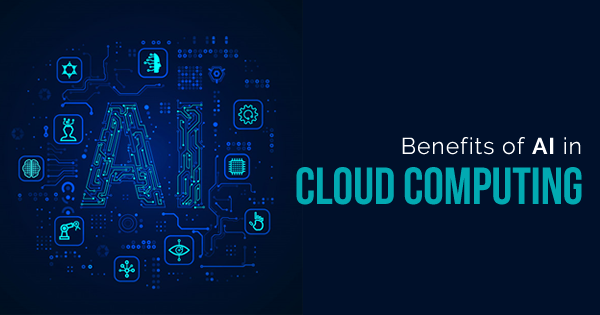In the realm of artificial intelligence and machine learning, deep learning architectures have emerged as powerful tools for solving complex problems across various domains. Among the plethora of deep learning architectures, Convolutional Neural Networks (CNNs), Recurrent Neural Networks (RNNs), and Transformers stand out as some of the most influential and widely used models. In this comprehensive guide, we will delve into the structures, applications, and recent advancements of these deep learning architectures, providing insights into their workings and potential.
Convolutional Neural Networks (CNNs)
Convolutional Neural Networks, or CNNs, have revolutionized the field of computer vision and image recognition. Their architecture is inspired by the visual cortex of the human brain, enabling them to effectively extract features from images. CNNs consist of multiple layers, including convolutional layers, pooling layers, and fully connected layers.
- Convolutional Layers: These layers apply convolution operations to the input image, extracting various features through filters or kernels. The filters slide across the input image, capturing patterns such as edges, textures, and shapes.
- Pooling Layers: Pooling layers downsample the feature maps generated by convolutional layers, reducing their spatial dimensions while retaining important information. Common pooling techniques include max pooling and average pooling.
- Fully Connected Layers: Fully connected layers are traditional neural network layers that connect every neuron from one layer to another. They integrate the extracted features and perform classification or regression tasks based on the learned representations.
Applications of CNNs
CNNs have found widespread applications in numerous fields, including:
- Image Classification: Classifying images into predefined categories (e.g., identifying objects in photographs).
- Object Detection: Detecting and localizing objects within images, enabling tasks such as pedestrian detection and autonomous driving.
- Facial Recognition: Recognizing faces in images or videos, with applications in security and authentication systems.
- Medical Imaging: Analyzing medical images for diagnostic purposes, such as identifying tumors in MRI scans.
Recent Advancements in CNNs
Recent advancements in CNNs have focused on improving performance, efficiency, and interpretability. Some notable advancements include:
- Transfer Learning: Leveraging pre-trained CNN models on large datasets and fine-tuning them for specific tasks, reducing the need for extensive training data.
- Architectural Innovations: Designs such as residual connections (ResNet), inception modules, and attention mechanisms have enhanced the representational power and efficiency of CNNs.
- Adversarial Training: Techniques to defend CNNs against adversarial attacks, which manipulate input data to deceive the model, ensuring robustness and reliability in real-world scenarios.
Recurrent Neural Networks (RNNs)
Recurrent Neural Networks, or RNNs, are designed to process sequential data by maintaining internal state or memory. Unlike traditional feedforward neural networks, RNNs can handle input sequences of varying lengths and learn temporal dependencies within the data.
- Recurrent Connections: RNNs have recurrent connections that allow information to persist over time, enabling them to capture sequential patterns and dependencies in the data.
- Long Short-Term Memory (LSTM): A variant of RNNs, LSTM networks incorporate memory cells and gating mechanisms to better capture long-range dependencies and mitigate the vanishing gradient problem.
- Gated Recurrent Unit (GRU): Similar to LSTMs, GRUs also address the vanishing gradient problem but with a simpler architecture, making them more computationally efficient.
Applications of RNNs
RNNs have diverse applications across various domains, including:
- Natural Language Processing: Modeling and generating text, language translation, sentiment analysis, and speech recognition.
- Time Series Analysis: Forecasting stock prices, weather predictions, and analyzing physiological data in healthcare.
- Sequential Data Processing: Music generation, video analysis, and gesture recognition in human-computer interaction.
Recent Advancements in RNNs
Recent advancements in RNNs have focused on improving their ability to model long-term dependencies, handle vanishing gradients, and process sequential data efficiently. Some notable advancements include:
- Attention Mechanisms: Introducing attention mechanisms to selectively focus on relevant parts of the input sequence, improving performance in tasks such as machine translation and summarization.
- Transformer Architecture: While originally developed for sequence-to-sequence tasks, transformers have emerged as a powerful alternative to traditional RNNs, offering parallelizable computation and capturing global dependencies more effectively.
Transformers
Transformers represent a groundbreaking architecture for processing sequential data, initially proposed for tasks such as machine translation. Unlike RNNs, transformers rely entirely on self-attention mechanisms to capture dependencies between input and output sequences.
- Self-Attention Mechanism: Transformers use self-attention mechanisms to weigh the importance of different input tokens when generating output tokens, enabling them to capture long-range dependencies more effectively.
- Multi-Head Attention: By employing multiple attention heads in parallel, transformers can capture diverse relationships between input and output tokens, enhancing their representational power.
- Positional Encoding: Transformers incorporate positional encoding to provide information about the position of tokens within the input sequence, enabling the model to distinguish between tokens with similar semantic meanings.
Applications of Transformers
Transformers have demonstrated remarkable performance across various natural language processing tasks, including:
- Machine Translation: Translating text between different languages with high accuracy and fluency.
- Text Generation: Generating coherent and contextually relevant text, such as in dialogue systems and content generation.
- Question Answering: Providing accurate responses to questions posed in natural language, as demonstrated in search engines and virtual assistants.
Recent Advancements in Transformers
Recent advancements in transformers have focused on scalability, efficiency, and extending their applicability to diverse domains. Some notable advancements include:
- Scaled Attention Mechanisms: Techniques to scale up transformers for handling longer sequences and larger datasets, enabling them to process documents, images, and videos efficiently.
- Efficient Transformer Architectures: Design modifications and parameter reductions to make transformers more computationally efficient, facilitating deployment in resource-constrained environments.
- Domain-Specific Transformers: Tailoring transformer architectures and pre-training strategies to specific domains, such as scientific literature, legal documents, and code generation.
By Our Media Team
Our Editorial team comprises of over 15 highly motivated bunch of individuals, who work tirelessly to get the most sought after curated content for our subscribers.




